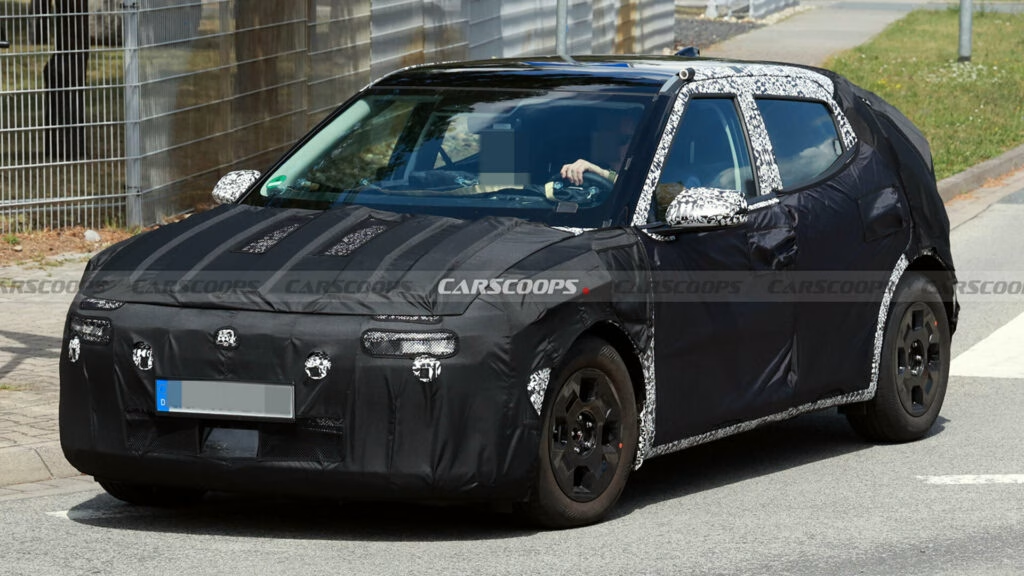What Makes the Hyundai Ioniq 2 Stand Out in the Affordable EV Market?
Spy shots have finally given us a peek at Hyundai’s next big move: an affordable electric hatchback likely to be called the Ioniq 2. If you’ve been watching the EV space, you know Hyundai’s been focused on larger, pricier models like the Ioniq 6 N and the upcoming Ioniq 9. But this new prototype signals a shift—Hyundai’s ready to compete in the wallet-friendly EV segment, where rivals like Kia have been making serious waves.
Why Is Hyundai Targeting the Hatchback Segment Now?
Let’s be honest: hatchbacks have always had a loyal following, especially among city drivers and folks who want practicality without sacrificing style. The Ioniq 2, with its compact size and hatchback profile, is a direct response to the growing demand for smaller, more affordable electric cars. Kia’s EV2 and EV3 have already shown there’s a hungry market for this kind of vehicle. Hyundai’s move isn’t just about following trends—it’s about giving drivers more choices at a time when EV adoption is finally hitting its stride.
How Does the Ioniq 2 Compare to Kia’s EV2 and Other Competitors?
At first glance, the Ioniq 2 shares a lot with Kia’s EV2. Both sit on the Electric-Global Modular Platform (E-GMP), which has become Hyundai Motor Group’s go-to foundation for new EVs. Expect a 58.3 kWh battery pack and a front-mounted motor churning out around 201 horsepower. That’s plenty for zipping around town or tackling a highway commute, and it puts the Ioniq 2 in the same league as the Volkswagen ID.3 and Renault Megane E-Tech.
But here’s where Hyundai is carving its own path: while the Kia EV2 leans into crossover territory, the Ioniq 2 keeps things classic with a true hatchback silhouette. Think gently sloping roof, compact greenhouse, and a curvy beltline contrasted by angular window frames. It’s a look that feels both fresh and familiar—kind of like running into an old friend who just got a new haircut.
What Design Features Set the Ioniq 2 Apart?
Even under heavy camouflage, the Ioniq 2’s design cues are hard to miss. Up front, there’s an upright fascia with a wide lower intake, slender lighting units, and an angular sensor—likely for advanced driver assistance features. The modestly sized wheels, wrapped in Hankook iON GT summer tires, hint at a focus on efficiency and ride comfort.
Around back, the Ioniq 2 sports an upright rear end with LED taillights and a simple bumper. The angular rear window adds a bit of personality, while the overall stance suggests a roomy cargo area—always a win for hatchback fans. It’s not flashy, but it’s practical and modern, which is exactly what many buyers want in this segment.
Will the Ioniq 2 Deliver on Performance and Range?
While Hyundai hasn’t released official specs, the shared platform and battery with Kia’s EV2 and EV3 give us some solid clues. If the Ioniq 2 matches the EV3’s numbers, we’re looking at a real-world range of around 250-300 miles on a single charge—right in the sweet spot for daily driving and weekend getaways. The 201 hp motor should provide brisk acceleration, especially given the car’s compact footprint.
Of course, range and performance aren’t just about numbers. They’re about confidence—knowing you can make it to work, run errands, and still have juice left for a spontaneous road trip. Hyundai’s track record with recent EVs suggests the Ioniq 2 will deliver where it counts.
How Will Pricing and Value Stack Up?
Affordability is the name of the game here. While Hyundai hasn’t announced pricing, industry analysts expect the Ioniq 2 to slot above the Inster but below the larger Ioniq 5. That likely puts it in the $30,000-$35,000 range before incentives, making it a serious contender for buyers who want an EV without breaking the bank.
Factor in Hyundai’s generous warranty and the lower running costs of electric vehicles, and the Ioniq 2 starts to look like a smart long-term investment. According to a 2023 report from BloombergNEF, the total cost of ownership for compact EVs is now on par with—or even lower than—comparable gas cars in many markets, thanks to reduced maintenance and fuel costs.
What’s the Real-World Appeal of the Ioniq 2?
For many drivers, the Ioniq 2’s biggest draw will be its blend of practicality, style, and affordability. Picture this: you’re navigating city streets, squeezing into tight parking spots, and still have room for groceries, gear, or a couple of bikes in the back. The hatchback form factor just works—no wonder it’s making a comeback in the EV era.
And let’s not forget the tech. Hyundai’s recent models have impressed with user-friendly infotainment, advanced safety features, and over-the-air updates. Expect the Ioniq 2 to follow suit, making it a solid choice for both first-time EV buyers and seasoned electric drivers looking to downsize.
What Should You Watch for as the Ioniq 2 Launch Approaches?
Keep an eye out for more details as Hyundai pulls back the camouflage and reveals the final design. Battery options, charging speeds, and interior features will be key factors to watch. If Hyundai nails the pricing and delivers on range, the Ioniq 2 could shake up the affordable EV market in a big way.
The big takeaway? The Ioniq 2 isn’t about perfection—it’s about smarter adjustments. Start with one change this week, and you’ll likely spot the difference by month’s end. For many, that change might just be considering a hatchback EV that finally fits both their budget and their lifestyle.

